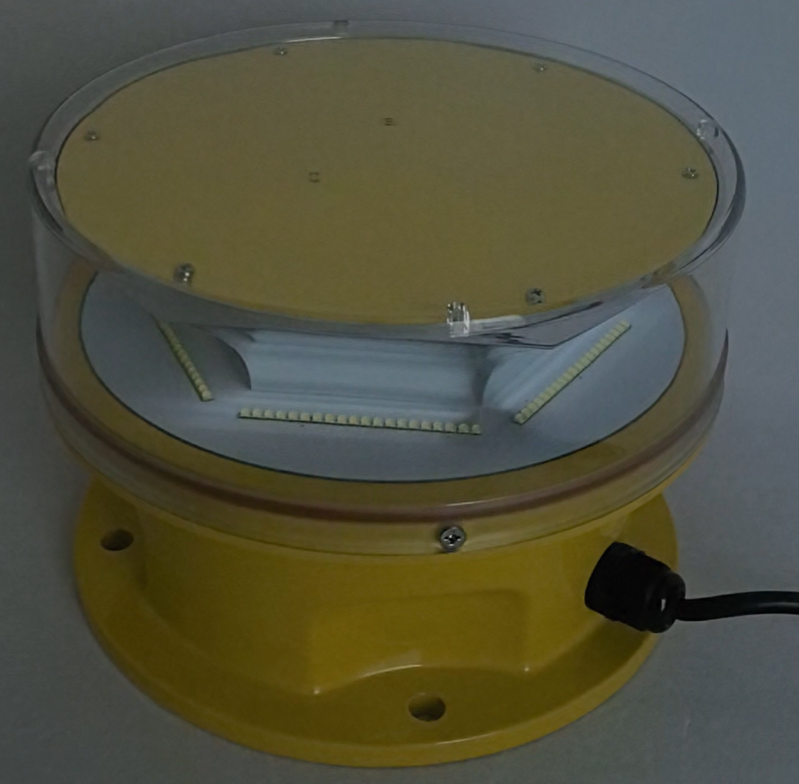Medium Intensity Aviation Lights: Balancing Visibility and Efficiency in Airspace Safety
In the complex world of aviation safety, medium intensity aviation lights play a critical role in marking obstacles and ensuring navigational clarity. These lights strike a balance between high-intensity beacons and low-intensity markers, providing optimal visibility without causing excessive glare. Used on structures like communication towers, wind turbines, and tall buildings, they help pilots identify potential hazards both day and night. This article explores their purpose, regulatory standards, technological advancements, and best practices for deployment.
The Role of Medium Intensity Aviation Lights
Aviation obstruction lighting is categorized into low, medium, and high intensity based on visibility requirements. Medium intensity aviation lights are typically used for structures between 200 and 500 feet in height, where they must be visible from a significant distance but do not require the extreme brightness of high-intensity systems.

Key Applications:
Telecommunication towers
Wind turbines
Bridges and high-rise buildings
Power transmission structures
| medium intensity aviation light |
Primary Functions:
✔ Daytime visibility (using white strobes)
✔ Nighttime obstruction marking (using steady or flashing red lights)
✔ Compliance with FAA, ICAO, and other aviation regulations
Regulatory Standards for Medium Intensity Aviation Lights
Different aviation authorities have specific requirements for obstruction lighting. The most widely recognized standards include:
1. FAA (Federal Aviation Administration) – AC 70/7460-1L
Type L-864 (Red) – Medium-intensity steady-burning or flashing lights for nighttime use.
Type L-865 (White) – Medium-intensity strobes for daytime and twilight conditions.
Dual Lighting Systems – Some structures require automatic switching between white (day) and red (night) lights.
2. ICAO (International Civil Aviation Organization) – Annex 14
Specifies light intensity, flash rate, and color for global uniformity.
Requires synchronization of multiple lights to avoid pilot confusion.
| medium intensity aviation lights |
3. EASA (European Union Aviation Safety Agency)
Similar to FAA but may have additional environmental or energy efficiency requirements.
Non-compliance can lead to fines, increased liability, and potential aviation hazards.
Types of Medium Intensity Aviation Lights
Several lighting configurations are used depending on structure height, location, and regulatory demands:
1. Medium Intensity White Strobe Lights (L-865)
Used during daylight hours.
High-visibility flashes (40 flashes per minute).
Effective up to 3-5 nautical miles.
2. Medium Intensity Red Lights (L-864)
Used at night.
Can be steady or flashing (30-60 flashes per minute).
Prevents glare while maintaining visibility.
3. Dual Lighting Systems
Automatically switch between white strobes (day) and red lights (night).
Reduce energy consumption while meeting FAA/ICAO standards.
4. LED-Based Medium Intensity Lights
More energy-efficient than traditional xenon strobes.
Longer lifespan, lower maintenance costs.
Brighter and more consistent light output.
Best Practices for Installation and Maintenance
Proper deployment of medium intensity aviation lights ensures reliability and compliance.
1. Optimal Placement
Install at the highest point of the structure.
For very tall structures, additional side-marker lights may be needed.
2. Weather Resistance
Choose lights with IP66 or higher ratings for dust/water resistance.
Corrosion-resistant materials for coastal or industrial areas.
3. Power Backup & Monitoring
Backup batteries or solar panels prevent outages.
Remote monitoring systems alert maintenance teams to failures.
4. Routine Inspections
Check for burnt-out bulbs, wiring issues, or lens damage.
Clean lenses periodically to maintain brightness.
Emerging Trends in Aviation Obstruction Lighting
The industry is evolving with new technologies improving efficiency and reliability:
1. Smart Adaptive Lighting
Adjusts brightness based on ambient light and weather conditions.
Reduces light pollution in surrounding areas.
2. Solar-Powered Systems
Ideal for remote locations without reliable grid power.
Lower operational costs and environmental impact.
3. Wireless Synchronization
Ensures all lights flash simultaneously to avoid pilot confusion.
Simplifies installation and maintenance.
4. Drone-Based Inspections
Drones with thermal cameras can detect malfunctioning lights quickly.
Medium intensity aviation lights are a crucial component of airspace safety, ensuring that tall structures remain visible to pilots without causing unnecessary glare. By adhering to FAA, ICAO, and EASA regulations, selecting the right lighting technology, and maintaining systems properly, operators can enhance aviation safety while minimizing operational disruptions.
